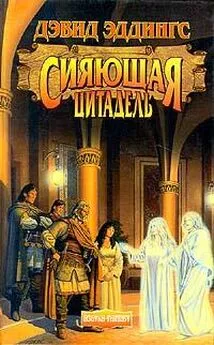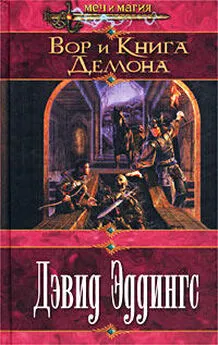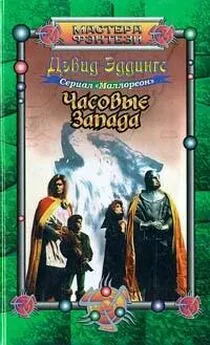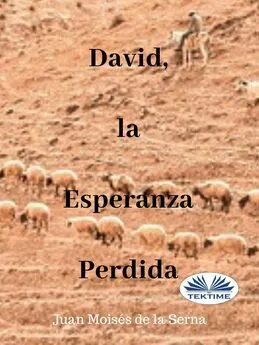David Wallace - Infinite jest
- Название:Infinite jest
- Автор:
- Жанр:
- Издательство:Back Bay Books
- Год:2006
- ISBN:нет данных
- Рейтинг:
- Избранное:Добавить в избранное
-
Отзывы:
-
Ваша оценка:
David Wallace - Infinite jest краткое содержание
Infinite Jest is the name of a movie said to be so entertaining that anyone who watches it loses all desire to do anything but watch. People die happily, viewing it in endless repetition. The novel Infinite Jest is the story of this addictive entertainment, and in particular how it affects a Boston halfway house for recovering addicts and a nearby tennis academy, whose students have many budding addictions of their own. As the novel unfolds, various individuals, organisations, and governments vie to obtain the master copy of Infinite Jest for their own ends, and the denizens of the tennis school and halfway house are caught up in increasingly desperate efforts to control the movie — as is a cast including burglars, transvestite muggers, scam artists, medical professionals, pro football stars, bookies, drug addicts both active and recovering, film students, political assassins, and one of the most endearingly messed-up families ever captured in a novel.
On this outrageous frame hangs an exploration of essential questions about what entertainment is, and why it has come to so dominate our lives; about how our desire for entertainment interacts with our need to connect with other humans; and about what the pleasures we choose say about who we are. Equal parts philosophical quest and screwball comedy, Infinite Jest bends every rule of fiction without sacrificing for a moment its own entertainment value. The huge cast and multilevel narrative serve a story that accelerates to a breathtaking, heartbreaking, unfogettable conclusion. It is an exuberant, uniquely American exploration of the passions that make us human and one of those rare books that renew the very idea of what a novel can do.
Infinite jest - читать онлайн бесплатно полную версию (весь текст целиком)
Интервал:
Закладка:
Geoffrey Day’s noted the way most of the male residents of Ennet House have special little cognomens for their genitals. E.g. ‘Bruno,’ ‘Jake,’ ‘Fang’ (Minty), ‘The One-Eyed Monk,’ ‘Fritzie,’ ‘Russell the Love Muscle.’ He speculates this could be a class thing: neither he nor Ewell nor Ken Erdedy have named their Units. Like Ewell, Day enters a certain amount of comparative-class data in his journal. Doony Glynn called his penis ‘Poor Richard’; Chandler Foss confessed to the moniker ‘Barn-Bam.’ Lenz had referred to his own Unit as ‘the Frightful Hog.’ Day would die before admitting he missed either Lenz or his soliloquies about the Hog, which had been frequent. The penis in question had been that curious two or three shades darker than the rest of Lenz that people’s penises sometimes are. Lenz had brandished it at his roommates whenever he wished to emphasize a point. It had been short and thick and blunt, and Lenz described the Hog as a prímo example of what he called the Polish Curse, viz. undistinguished length but sobering circumference: ‘Easy on the bottom but tears hell out of the sides, brother.’ This had been his description of the Polish Curse. A surprising amount of Day’s Recovery Journal is filled with quotations from R. Lenz. Lenz’s discharge had moved the tax-attorney Tiny Ewell up into the 3-Man room with Day. Ewell was the one man here with whom a conversation of anything remotely approaching depth could be held, so Day was nonplussed when he found himself, after a couple long nights, almost missing Lenz, his obsession with time, his patter, his way of leaning up against the wall upside-down in his briefs, or brandishing the Hog.
And re Ennet House resident Kate Gompert and this depression issue: Some psychiatric patients — plus a certain percentage of people who’ve gotten so dependent on chemicals for feelings of well-being that when the chemicals have to be abandoned they undergo a loss-trauma that reaches way down deep into the soul’s core systems — these persons know firsthand that there’s more than one kind of so-called ‘depression.’ One kind is low-grade and sometimes gets called anhedonia [280] or simple melancholy. It’s a kind of spiritual torpor in which one loses the ability to feel pleasure or attachment to things formerly important. The avid bowler drops out of his league and stays home at night staring dully at kick-boxing cartridges. The gourmand is off his feed. The sensualist finds his beloved Unit all of a sudden to be so much feelingless gristle, just hanging there. The devoted wife and mother finds the thought of her family about as moving, all of a sudden, as a theorem of Euclid. It’s a kind of emotional novocaine, this form of depression, and while it’s not overtly painful its deadness is disconcerting and … well, depressing. Kate Gompert’s always thought of this anhedonic state as a kind of radical abstracting of everything, a hollowing out of stuff that used to have affective content. Terms the undepressed toss around and take for granted as full and fleshy — happiness, joie de vivre, preference, love — are stripped to their skeletons and reduced to abstract ideas. They have, as it were, denotation but not connotation. The anhedonic can still speak about happiness and meaning et ah, but she has become incapable of feeling anything in them, of understanding anything about them, of hoping anything about them, or of believing them to exist as anything more than concepts. Everything becomes an outline of the thing. Objects become schemata. The world becomes a map of the world. An anhedonic can navigate, but has no location. I.e. the anhedonic becomes, in the lingo of Boston AA, Unable To Identify.
It’s worth noting that, among younger E.T.A.s, the standard take on Dr. J. O. Incandenza’s suicide attributes his putting his head in the microwave to this kind of anhedonia. This is maybe because anhedonia’s often associated with the crises that afflict extremely goal-oriented people who reach a certain age having achieved all or more than all than they’d hoped for. The what-does-it-all-mean-type crisis of middle-aged Americans. In fact this is in fact not what killed Incandenza at all. In fact the presumption that he’d achieved all his goals and found that the achievement didn’t confer meaning or joy on his existence says more about the students at E.T.A. than it says about Orin’s and Hal’s father: still under the influence of the deLint-like carrot-and-stick philosophies of their hometown coaches rather than the more paradoxical Schtitt/Incandenza/Lyle school, younger athletes who can’t help gauging their whole worth by their place in an ordinal ranking use the idea that achieving their goals and finding the gnawing sense of worthlessness still there in their own gut as a kind of psychic bogey, something that they can use to justify stopping on their way down to dawn drills to smell flowers along the E.T.A. paths. The idea that achievement doesn’t automatically confer interior worth is, to them, still, at this age, an abstraction, rather like the prospect of their own death — ‘Caius Is Mortal’ and so on. Deep down, they all still view the competitive carrot as the grail. They’re mostly going through the motions when they invoke anhedonia. They’re mostly small children, keep in mind. Listen to any sort of sub-16 exchange you hear in the bathroom or food line: ‘Hey there, how are you?’ ‘Number eight this week, is how I am.’ They all still worship the carrot. With the possible exception of the tormented LaMont Chu, they all still subscribe to the delusive idea that the continent’s second-ranked fourteen-year-old feels exactly twice as worthwhile as the continent’s #4.
Deluded or not, it’s still a lucky way to live. Even though it’s temporary. It may well be that the lower-ranked little kids at E.T.A. are proportionally happier than the higher-ranked kids, since we (who are mostly not small children) know it’s more invigorating to want than to have, it seems. Though maybe this is just the inverse of the same delusion.
Hal Incandenza, though he has no idea yet of why his father really put his head in a specially-dickied microwave in the Year of the Trial-Size Dove Bar, is pretty sure that it wasn’t because of standard U.S. anhedonia. Hal himself hasn’t had a bona fide intensity-of-interior-life-type emotion since he was tiny; he finds terms like joie and value to be like so many variables in rarified equations, and he can manipulate them well enough to satisfy everyone but himself that he’s in there, inside his own hull, as a human being — but in fact he’s far more robotic than John Wayne. One of his troubles with his Moms is the fact that Avril Incandenza believes she knows him inside and out as a human being, and an internally worthy one at that, when in fact inside Hal there’s pretty much nothing at all, he knows. His Moms Avril hears her own echoes inside him and thinks what she hears is him, and this makes Hal feel the one thing he feels to the limit, lately: he is lonely.
It’s of some interest that the lively arts of the millennial U.S.A. treat anhedonia and internal emptiness as hip and cool. It’s maybe the vestiges of the Romantic glorification of Weltschmerz, which means world-weariness or hip ennui. Maybe it’s the fact that most of the arts here are produced by world-weary and sophisticated older people and then consumed by younger people who not only consume art but study it for clues on how to be cool, hip — and keep in mind that, for kids and younger people, to be hip and cool is the same as to be admired and accepted and included and so Unalone. Forget so-called peer-pressure. It’s more like peer-hunger. No? We enter a spiritual puberty where we snap to the fact that the great transcendent horror is loneliness, excluded encagement in the self. Once we’ve hit this age, we will now give or take anything, wear any mask, to fit, be part-of, not be Alone, we young. The U.S. arts are our guide to inclusion. A how-to. We are shown how to fashion masks of ennui and jaded irony at a young age where the face is fictile enough to assume the shape of whatever it wears. And then it’s stuck there, the weary cynicism that saves us from gooey sentiment and unsophisticated naïveté. Sentiment equals na-ïveté on this continent (at least since the Reconfiguration). One of the things sophisticated viewers have always liked about J. O. Incandenza’s The American Century as Seen Through a Brick is its unsubtle thesis that naïveté is the last true terrible sin in the theology of millennial America. And since sin is the sort of thing that can be talked about only figuratively, it’s natural that Himself’s dark little cartridge was mostly about a myth, viz. that queerly persistent U.S. myth that cynicism and naïveté are mutually exclusive. Hal, who’s empty but not dumb, theorizes privately that what passes for hip cynical transcendence of sentiment is really some kind of fear of being really human, since to be really human fat least as he conceptualizes it) is probably to be unavoidably sentimental and naive and goo-prone and generally pathetic, is to be in some basic interior way forever infantile, some sort of not-quite-right-looking infant dragging itself anaclitically around the map, with big wet eyes and froggy-soft skin, huge skull, gooey drool. One of the really American things about Hal, probably, is the way he despises what it is he’s really lonely for: this hideous internal self, incontinent of sentiment and need, that pules and writhes just under the hip empty mask, anhedonia.[281]
The American Century as Seen Through a Brick’s main and famous key-image is of a piano-string vibrating — a high D, it looks like — vibrating, and making a very sweet unadorned solo sound indeed, and then a little thumb comes into the frame, a blunt moist pale and yet dingy thumb, with disreputable stuff crusted in one of the nail-corners, small and unlined, clearly an infantile thumb, and as it touches the piano string the high sweet sound immediately dies. And the silence that follows is excruciating. Later in the film, after much mordant and didactic panoramic brick-following, we’re back at the piano-string, and the thumb is removed, and the high sweet sound recommences, extremely pure and solo, and yet now somehow, as the volume increases, now with something rotten about it underneath, there’s something sick-sweet and overripe and potentially putrid about the one clear high D as its volume increases and increases, the sound getting purer and louder and more dysphoric until after a surprisingly few seconds we find ourselves right in the middle of the pure undampered sound longing and even maybe praying for the return of the natal thumb, to shut it up.
Hal isn’t old enough yet to know that this is because numb emptiness isn’t the worst kind of depression. That dead-eyed anhedonia is but a rem-ora on the ventral flank of the true predator, the Great White Shark of pain. Authorities term this condition clinical depression or involutional depression or unipolar dysphoria. Instead of just an incapacity for feeling, a deadening of soul, the predator-grade depression Kate Gompert always feels as she Withdraws from secret marijuana is itself a feeling. It goes by many names — anguish, despair, torment, or q.v. Burton’s melancholia or Yev-tuschenko’s more authoritative psychotic depression — but Kate Gompert, down in the trenches with the thing itself, knows it simply as It.
It is a level of psychic pain wholly incompatible with human life as we know it. It is a sense of radical and thoroughgoing evil not just as a feature but as the essence of conscious existence. It is a sense of poisoning that pervades the self at the self’s most elementary levels. It is a nausea of the cells and soul. It is an unnumb intuition in which the world is fully rich and animate and un-map-like and also thoroughly painful and malignant and antagonistic to the self, which depressed self It billows on and coagulates around and wraps in Its black folds and absorbs into Itself, so that an almost mystical unity is achieved with a world every constituent of which means painful harm to the self. Its emotional character, the feeling Gompert describes It as, is probably mostly indescribable except as a sort of double bind in which any/all of the alternatives we associate with human agency — sitting or standing, doing or resting, speaking or keeping silent, living or dying — are not just unpleasant but literally horrible.
Читать дальшеИнтервал:
Закладка:










